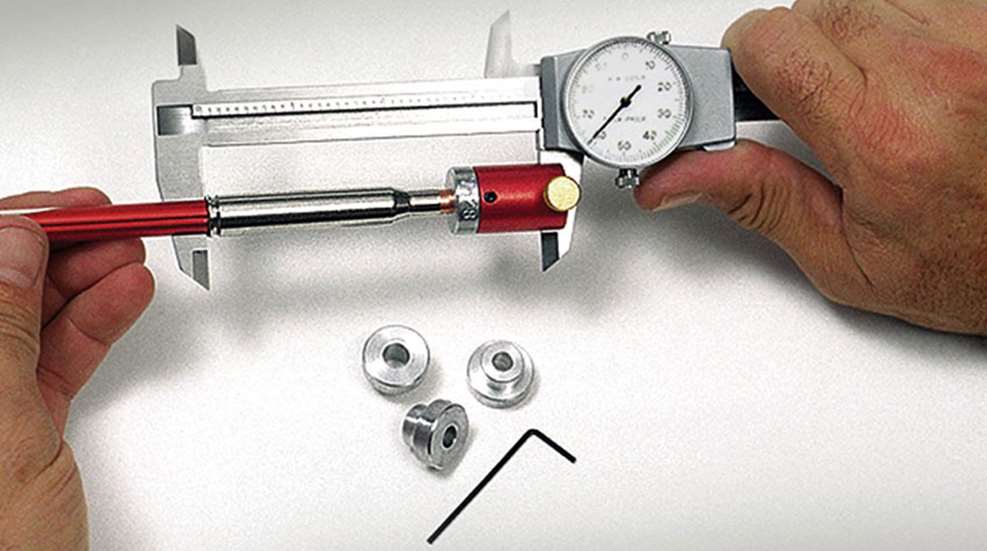
One of the tasks we accomplish when resizing a cartridge case during reloading is moving the shoulder back so the cartridge can headspace properly in the chamber. The problem is that few handloaders are able to quantify just how far they are “bumping” the shoulder. Years ago, I was taught to adjust the die until the rifle’s bolt would just close on a resized case—a technique that works but it isn’t necessarily repeatable. Excessive resizing can shorten case life and reduce accuracy. The solution is to use a gauge such as Hornady’s Lock-N-Load Headspace Comparator to determine the precise amount of movement. This set includes five bushings that accommodate a variety of cartridges. The bushings are used in conjunction with a caliper and Hornady’s Anvil Base, which secures the bushing to the caliper.
A fired case is placed into the jaws of the caliper, and the bushing intersects with the case at the datum line, the position at which headspace occurs. Take a measurement and write it down or, with a digital caliper, zero-out the readout. Adjust the sizing die until it just touches the shellholder with the press’ ram at its topmost position, then back the die off one-quarter turn. Lube and resize the case. Re-measure the case and subtract the second measurement from the first. The figure that remains is the amount of headspace change that has occurred on the case. John Whidden, a six-time national champion long-range shooter and custom reloading die maker, (who includes a similar gauge with each of his sizing dies) recommends 0.001" to 0.002" of headspace on bolt-action rifles and 0.004" to 0.005" for repeaters. This quantifiable and repeatable technique ensures minimal brass stretching, increases case life and often increases accuracy.
Additional Reading:
Tips & Techniques: Cast Bullet Fit in Revolvers
Tips & Techniques: Stock Drag
Tips & Techniques: Stay in the Scope
Tips & Techniques: When Adjusting Sights, Remember "FORS"
Tips & Techniques: "Take Out The Slack" To Keep Accessories In Place
Tips & Techniques: Rotate-To-Fire In Close Encounters






































